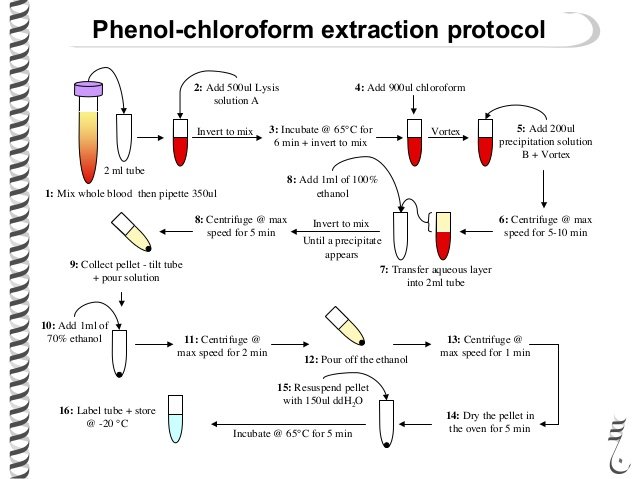DNA extraction: Comparison of methodologies
Principle
Good quality DNA is a prerequisite for all experiments of DNA manipulation. All plant DNA
extraction protocols comprise of the basic steps of disruption of the cell wall, cell membrane
and nuclear membrane to release the DNA into solution followed by precipitation of DNA
while ensuring removal of the contaminating biomolecules such as the proteins,
polysaccharides, lipids, phenols and other secondary metabolites. This is brought about by
disruption of the tissue in a mortar and pestle aided by liquid nitrogen and the various
components of the homogenization or extraction buffer followed the precipitating and
purification methods employed. Since DNA can be extracted from various types of tissues
such as seedlings, leaves, cotyledons, seeds, endosperm, tissue culture callus, roots etc., the
tissue type along with the concentration of DNA finally required determine the methodology
of DNA extraction to be followed by the experimenter. The most commonly used basic plant
DNA extraction protocols are those of Dellaporta et al. 1983 and Saghai Maroof et al.,1984
along with many others that are modifications of the components of these protocols to suit
a particular tissue type or downscaling them for miniprep. In addition to these basic
protocols, a panorama of DNA isolation kits based on either anion exchange
chromatography or silica gel membranes are available commercially.

Components
The role various components of DNA extraction protocol is as follows:
A. The extraction buffer
This includes a detergent such as cetyl trimethyl ammonium bromide(CTAB) or SDS
which disrupts the membranes, a reducing agent such as B mercaptoethanol which
helps in denaturing proteins by breaking the disulfide bonds between the cysteine
residues and for removing the tanins and polyphenols present in the crude extract, a
chelating agent such as EDTA which chelates the magnesium ions required for
DNase activity , a buffer which is almost always Tris at pH 8 and a salt such as
sodium chloride which aids in precipitation by neutralizing the negative charges on
the DNA so that the molecules can come together.
B. Phenol chloroform extraction
Nucleic acid solutions commonly contain undesirable contaminants that are chiefly
made of proteins. A classic method of purifying is phenol –chloroform extraction by
which the the nucleic acid solution is extracted by successively washing with a
volume of phenol(pH 8.0); a volume of phenol: chloroform: isoamyl alcohol (25: 24:
2
1) and chloroform: isoamyl alcohol ( 24:1). Centrifugation is performed
intermittently and the upper aqueous phase is transferred to a new tube while
avoiding the interphase. The contaminants are denatured and and accumulate in the
organic phase or in the marginal layer between the two phases and the nucleic acids
are preserved in the aqueous phase. Another way of removing proteins is by using
the enzyme proteinase K which however again is denatured by phenol via phenol
chloroform extraction.
C. Precipitation of nucleic acids
Alcohol precipitation is the most commonly used method for nucleic acid
precipitation. This requires diluting the nucleic acid with a monovalent salt , adding
alcohol to it and mixing gently. The nucleic acid precipitated spontaneously and can
be pelleted by centrifugation. The salts and alcohol remnants are removed by
washing with 70% alcohol. The most commonly used salts include sodium acetate
pH 5.2(final volume 0.3M), sodium chloride (final concentration 0.2M), ammonium
acetate (2- 2.5M), lithium chloride (0.8M) and potassium chloride. Ethanol (twice
the volume) or isopropanol ( two thirds volume) are the standard alcohols used for
nucleic acid precipitation.
D. Resuspending DNA
The nucleic acid pellet can be resuspended in either sterile distilled water or TE(10
mM Tris:1mM EDTA)
E. Purification of DNA
The DNA is purified by incubating the nucleic acid solution with RNase A (10mg/ml)
at 37°C and reprecipitation following phenol: chloroform extraction to remove the
RNase.